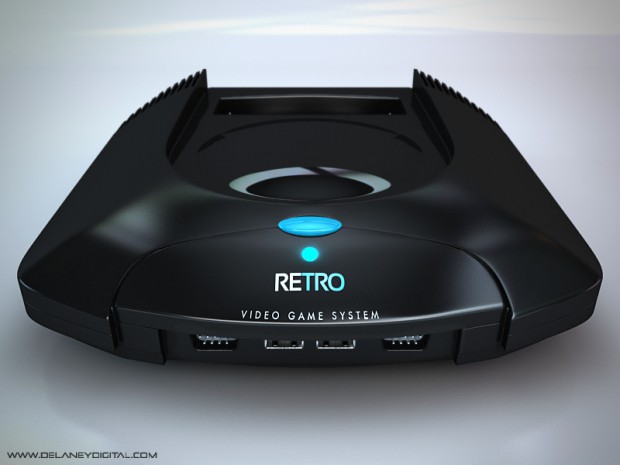Until recently, I hadn’t heard about Retro Video Game System (RETRO VGS). It’s an upcoming retro console and it will be Kickstarted sometimes in July-August this summer.
The Retro VGS is brand new hardware. And unlike the Retron 5, there is no emulation, only hardware. The console will target 16-bit as the sweetspot. I quite don’t get how it works, so I inklude a quote from the What’s going on under the hood? section in the F.A.Qs-page:
(Steve Woita) Think of it as hardware that is reconfigurable by the cartridge. The RETRO VGS will have its own cool configurations (ways to make a game), and it can also be hardware-configured to be other old-school architectures that a lot of developers are used to developing for. Specifically, and at this current time, it’s an FPGA and ARM system. If a developer wants to make a Neo Geo game, they would include an HDL (Hardware Description Language) file that configures the FPGA to operate like a Neo Geo. The developer would code their game to run against the Neo Geo platform. This HDL code along with the actual Neo Geo game will be on the cartridge. Once that cartridge is placed in the RETRO VGS, it will become a Neo Geo and play that game. So in this case, the language is: 68000 and Z80 code. If you wanted to do a new Atari 2600 styled game, you’d include a 2600 HDL file that configures the FPGA to replicate the logic of the original 2600 hardware and then you’d include your new 2600 game on that cartridge too. These two files are then paired up on the cartridge and when plugged into the RETRO VGS, will turn the console into a 2600. So the language that would be used in this case is: 6507 (6502 with less address space). Does that help explain things a little “bit” more? Oh and we’ll have a nice little ARM chip for some more fun stuff. We’ll be supplying the validated cores for developers to choose from and you don’t have to know how to program an FPGA to make a game, it just gives us a lot of hardware flexibility, I didn’t want to lock us in to a specific ASIC design.
The RETRO VGS will both have HDMI and analouge output. It will have two USB-ports and two oldschool 9-pins connections. There will be no firmware to update and no Internet-connection. The game will come on cartridges.
If you think the console looks like an Atari Jaguar, you’re right. They will use the same original tooling Atari used.
I’m looking forward to hear more about RETRO VGS in the comming months.

